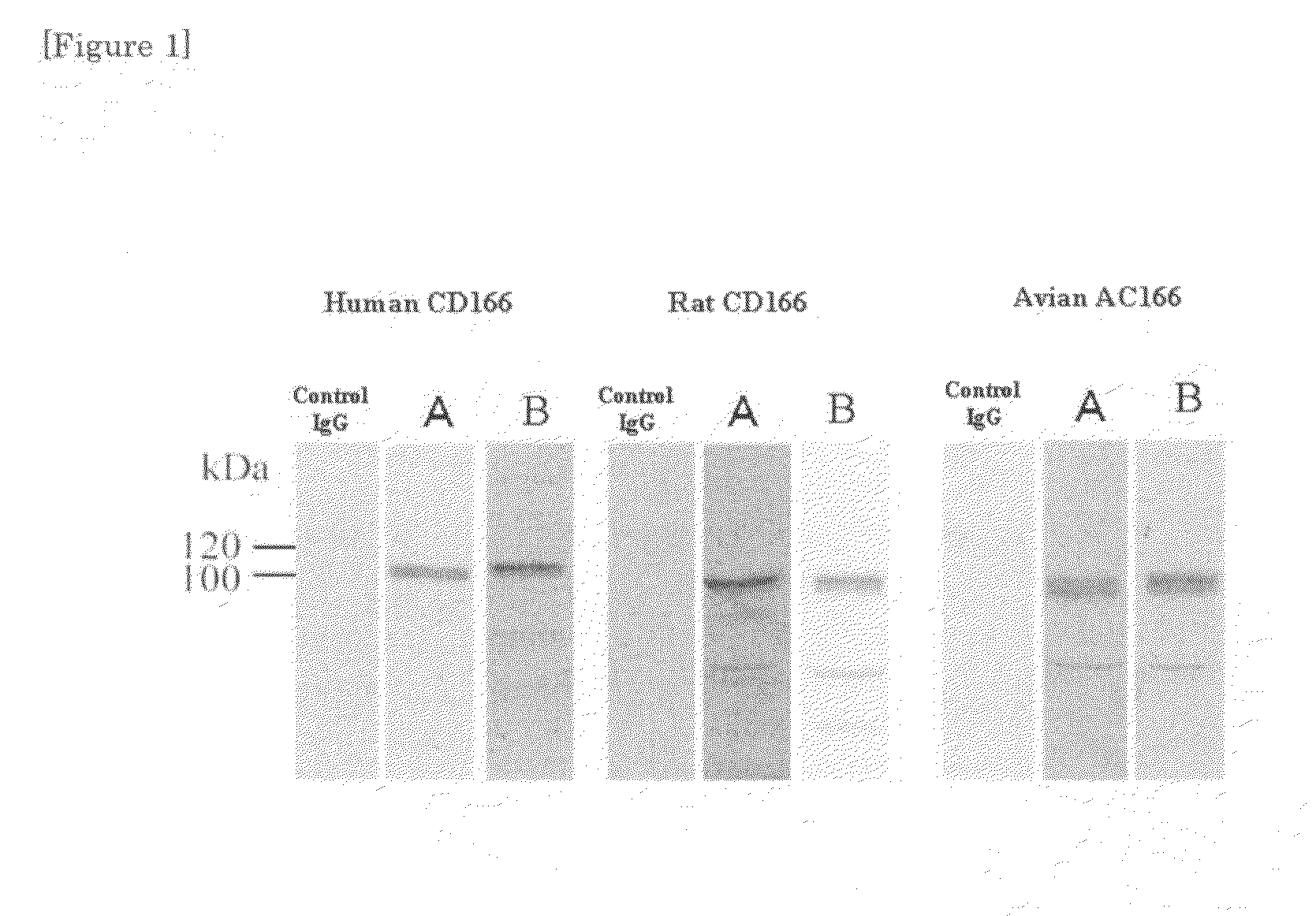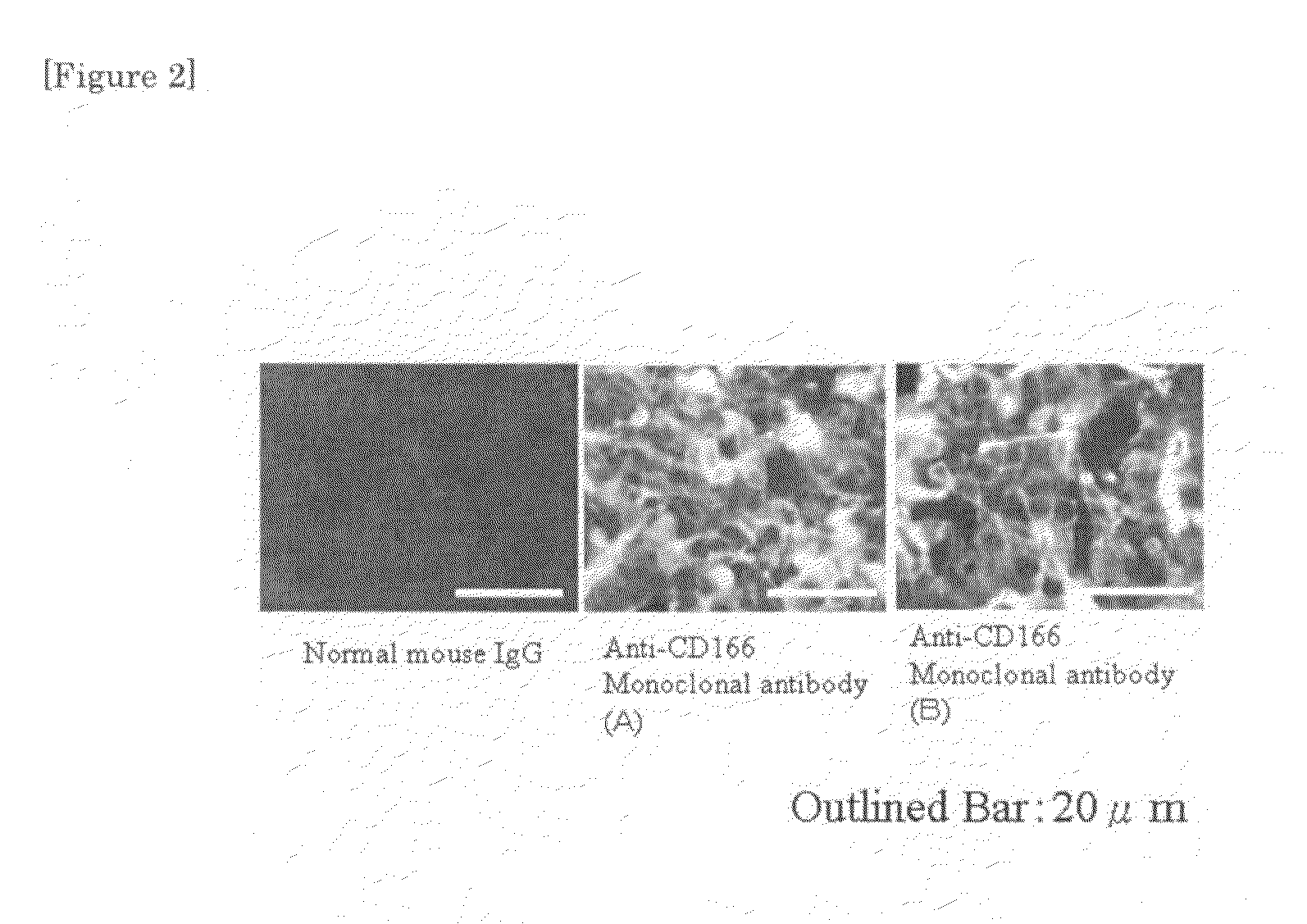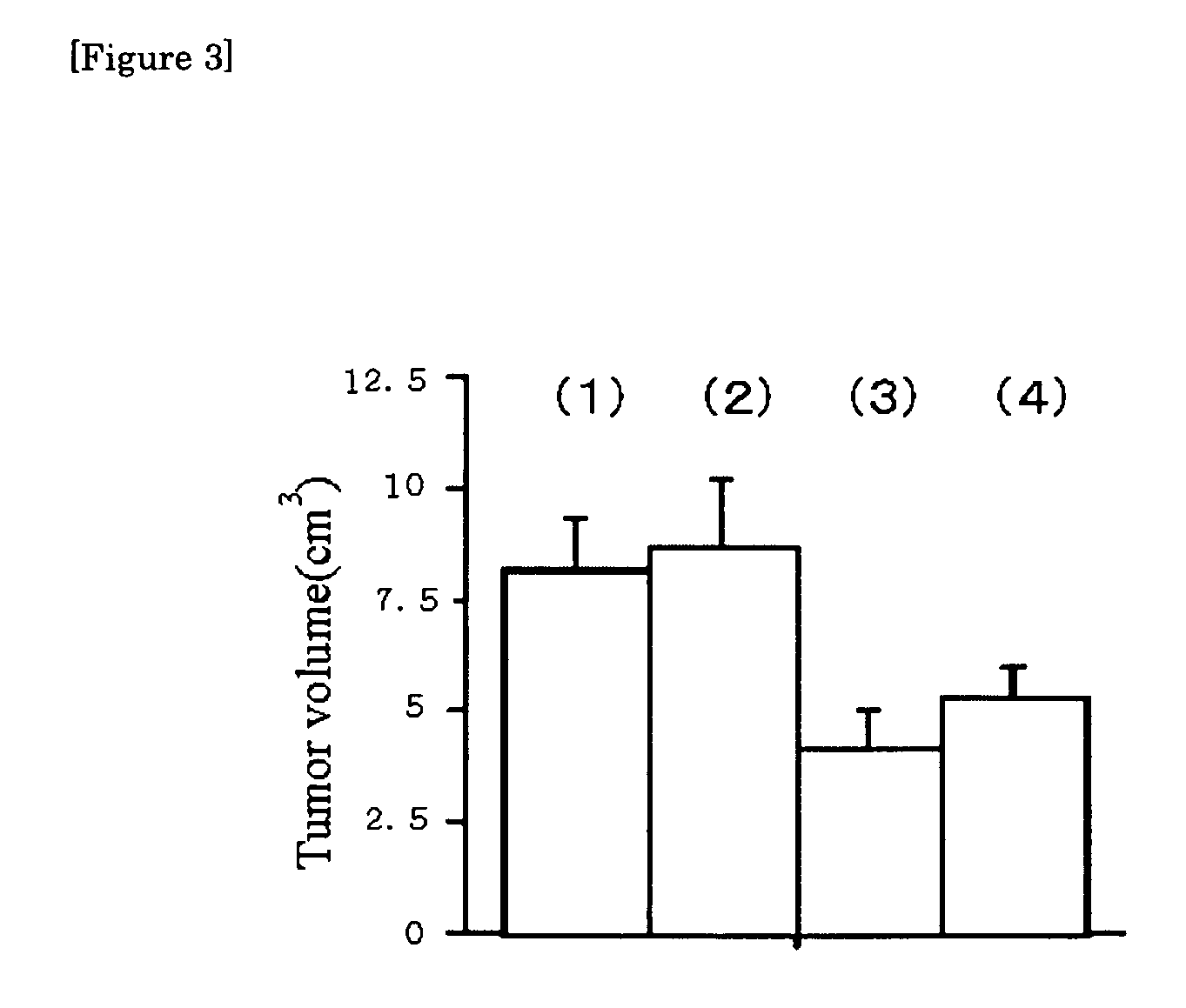Monoclonal antibody to CD166 and method for production thereof
a monoclonal antibody and antibody technology, applied in the field of monoclonal antibody to cd166 and method for production thereof, can solve the problems that the inventor cannot confirm the action of the monoclonal antibody to inhibit the growth of cancer cells, and achieve the inhibition of intercellular adhesion of cancer, restricted cancer cell growth and metastasis, and restricted tumor growth and metastasis.
- Summary
- Abstract
- Description
- Claims
- Application Information
AI Technical Summary
Benefits of technology
Problems solved by technology
Method used
Image
Examples
example 1
Preparation of Monoclonal Antibody
[0036]Six-week old male BALB / c mice were immunized as an antigen with the amino acids of SEQ ID Nos. 1 and 2 in the following Table 1 constituting part of the 4th immunoglobulin-like loop from the N-terminal of an avian CD166 (alias, SC1, BEN, ALCAM) protein.
[0037]
TABLE 1SEQ ID No. 1QIGEALPVSCTISSSRNATUFWSEQ ID No. 2ALPVSCTISSSRNATVFWIK
[0038]In the first immunization a mixture of 125 μg of the synthetic peptide and a complete adjuvant was administered intracutaneously. Two weeks after the first immunization a mixture of 125 μg of the synthetic peptide and an incomplete adjuvant was administered intracutaneously as the booster for a total of three times in every two weeks.
[0039]The increase of the mouse antibody titer was monitored by ELISA method. Spleen cells of the individual mouse having an increased antibody titer and myeloma cells (NS-1) were fused with each other by using polyethylene glycol (PEG), according to the method of Koehler and Milste...
example 2
[0052]It was shown in Example 1 that the antibodies A and B according to the present invention were adsorbed specifically on CD166 in vitro. Thus, specific adsorption in vivo was also studied.
[0053]106 pieces of human lung cancer cells (A549 cells) were inoculated in the cervical part of a nude mouse subcutaneously, and on the 21st day, 100 μg respectively of normal mouse IgG and the two kinds of anti-CD166 monoclonal antibodies (antibodies A and B) were administered from tail vein.
[0054]The tumor was removed, 12 hours after administration, and a frozen section thereof was prepared. The results after reaction with a FITC-labelled anti-mouse IgG antibody are shown in FIG. 2. The white bar in the photograph of FIG. 2 has a size of 20 micrometers. The FITC-labelled antibody if present appears white. The results show that there was almost no FITC-labelled antibody in the frozen section of normal mouse IgG.
[0055]On the other hand, the antibodies A and B was present in the while region, i...
example 3
Antitumor Action of Anti-CD166 Monoclonal Antibody
[0056]The growth-prohibiting action of the antibodies A and B according to the present invention was then examined. 106 pieces of human lung cancer cells (A549 cell) were inoculated in the cervical part of a nude mouse subcutaneously, and on the 5th, 10th, and 14th days, 100 μg respectively of normal mouse IgG and the two kinds of anti-CD166 monoclonal antibodies (antibodies A and B) were administered into the abdominal cavity.
[0057]The tumor volume of the mouse group administered with each antibody was determined, 3 weeks (21st day) after administration, and the results are shown in FIG. 3. In the Figure, the rod (1) corresponds to a case where only cancer cells were inoculated and no normal mouse IgG or the antibodies A or B was added.
[0058]The bar (2) shows the results obtained when normal mouse IgG was added, which are almost similar to those when nothing was added. On the other hand, the bars (3) and (4) show the results obtaine...
PUM
| Property | Measurement | Unit |
|---|---|---|
| wavelength | aaaaa | aaaaa |
| size | aaaaa | aaaaa |
| concentrations | aaaaa | aaaaa |
Abstract
Description
Claims
Application Information
 Login to View More
Login to View More - R&D
- Intellectual Property
- Life Sciences
- Materials
- Tech Scout
- Unparalleled Data Quality
- Higher Quality Content
- 60% Fewer Hallucinations
Browse by: Latest US Patents, China's latest patents, Technical Efficacy Thesaurus, Application Domain, Technology Topic, Popular Technical Reports.
© 2025 PatSnap. All rights reserved.Legal|Privacy policy|Modern Slavery Act Transparency Statement|Sitemap|About US| Contact US: help@patsnap.com



